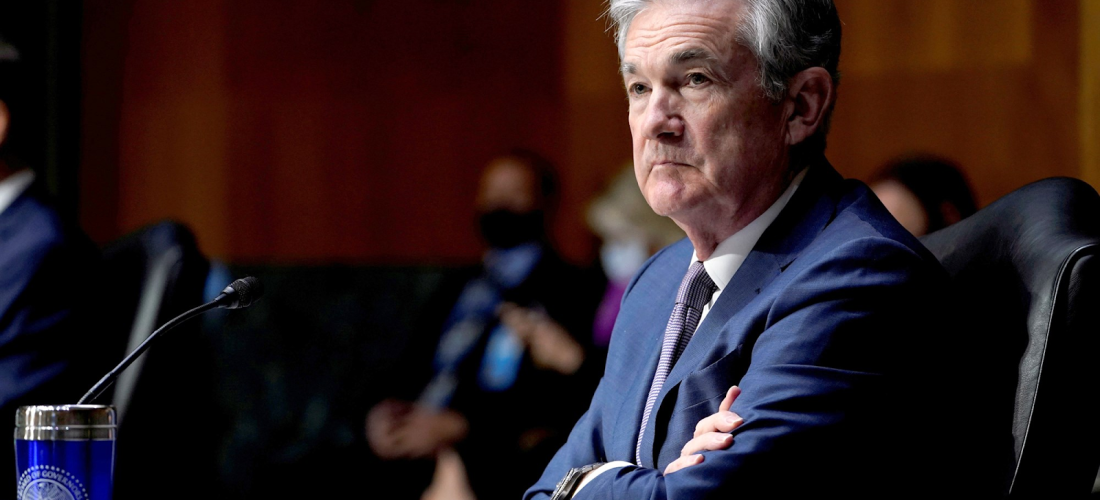Elizabeth McLaughlin, Staff

Chairman of the Federal Reserve Jerome Powell listens during a hearing before the Senate Banking Committee in December 2020.
On Tuesday, Feb. 23 at 11 a.m. EST, the chair of the Federal Reserve, Jerome Powell, testified before the Senate Banking Committee regarding the central bank’s semi-annual Monetary Policy Report. The Committee’s chair, Senator Sherrod Brown (D-OH) began the session with opening remarks about the current state of economic affairs. Senator Brown made it clear from the beginning that he is in favor of the Fed using any monetary tools it sees fit to manage inflation and unemployment, stating, “most people are not worried about doing too much to get through this pandemic, they’re worried about doing too little.” Further, he recalled remarks from Janet Yellen, the treasury secretary, who stated that if the Fed doesn’t do more by way of monetary policy, we risk a “permanent scarring” of our economy and our future.
Ranking member Senator Pat Toomey (R-PA) disagreed with Senator Brown, stating, “the last thing we need is a massive multimillion-dollar spending bill.” Senator Toomey was chiefly concerned with inflation and urged Powell to roll back the Fed’s holdings of treasury securities and agency mortgage-backed securities in order to avoid uncontrollable and unwanted inflation. Senator Toomey stated that most American households are in better financial positions now than they were before the pandemic. He stated that in his opinion, the last two recessions were caused by asset bubbles that burst. In 2001, it was the stock market, in 2008, the mortgage credit market. Additionally, Senator Toomey believes that monetary policy contributed a great deal to the formation of those bubbles.
He also remarked that there is a link between record amounts of liquidity and unprecedented asset valuations, like those of GameStop and Bitcoin, as of late. Across the board, Senator Toomey stated, there are elevated asset prices and signs of emerging inflation. He asked Powell if he believes there is a link between the liquidity the Fed has been providing and some of these unprecedented asset prices, to which Powell responded, “there is certainly a link.” Despite this, Powell and the Fed plan to continue the bond-buying program “at least at its current pace until we make substantial progress toward our current goals.”
Powell presented his testimony in two parts: a review of the current economic situation and the Fed’s plans for monetary policy moving forward. Powell stated that the sectors most adversely affected by the resurgence of the virus are the weakest. Household spending on services remains low, especially in the hard-hit sectors of leisure and hospitality. However, household spending on goods picked up in January. Moreover, the housing sector has “more than fully recovered from the downturn.” Regarding the labor market, Powell stated that the pace of improvement in the labor market has slowed and the unemployment rate remained elevated at 6.8 percent in January. Participation in the labor market is notably below pre-pandemic levels.
Moreover, Powell stated that “those least able to shoulder the burden [of the pandemic] have been hardest hit,” citing low wage workers, African Americans, Hispanics and other minority groups as the most affected. During the questioning portion of the hearing, Senator Bob Menendez (D-NJ) explained the varying unemployment rates by race: in January, the unemployment rate among the black population was 9.2 percent; among Hispanics, 8.6 percent. The unemployment rate among white people was 5.7 percent. Additionally, the Black labor force exit rate increased dramatically while the white labor force exit rate returned to pre-pandemic levels, suggesting that the Black unemployment rate is misleadingly low compared to the white rate. Senator Menendez got Powell to agree that minority families are bearing the brunt of the damage caused by the pandemic, “along with those at the lower end of the income spectrum.”
Regarding inflation, Powell stated that there were large declines in the spring, but consumer prices partially rebounded last year. Powell also stated that as the very low inflation readings from last March and April drop out of the 12-month calculation on inflation, we should expect readings on inflation to move up. This is called the base effect and it should not be a cause for concern. Powell mentioned that overall, inflation remains below the 2 percent long-run objective. He stressed that the 2 percent goal is an average, so periods of lower-than-average inflation should be followed by periods with inflation rates greater than 2 percent.
In his overview of the monetary policy report, Powell emphasized that maximum employment is a broad and inclusive goal, so policy decisions should be informed by an assessment of the shortfalls of employment from its maximum level, rather than deviations from its maximum level. Furthermore, Powell mentioned that actions taken by the Fed in the early months of the pandemic have constrained their main policy tool by the lower bound. In other words, the Fed has been lowering interest rates in unprecedented ways since even before the start of the pandemic, so their ability to use lowering interest rates as a monetary policy tool is weakened.
If lowering interest rates isn’t really much of an option anymore, what will the Fed do? Simply put, the Fed will do what it has been doing throughout the pandemic: increase holdings of securities at least at their current pace. The Fed will closely monitor inflation; Powell stated that “well-anchored inflation expectations will enhance our ability to meet both our employment and inflation goals.” Powell assured Congress that the Fed “will continue to clearly communicate our assessment of progress toward our goals well in advance of any change in the pace of purchases.”
mclaughline7@lasalle.edu

